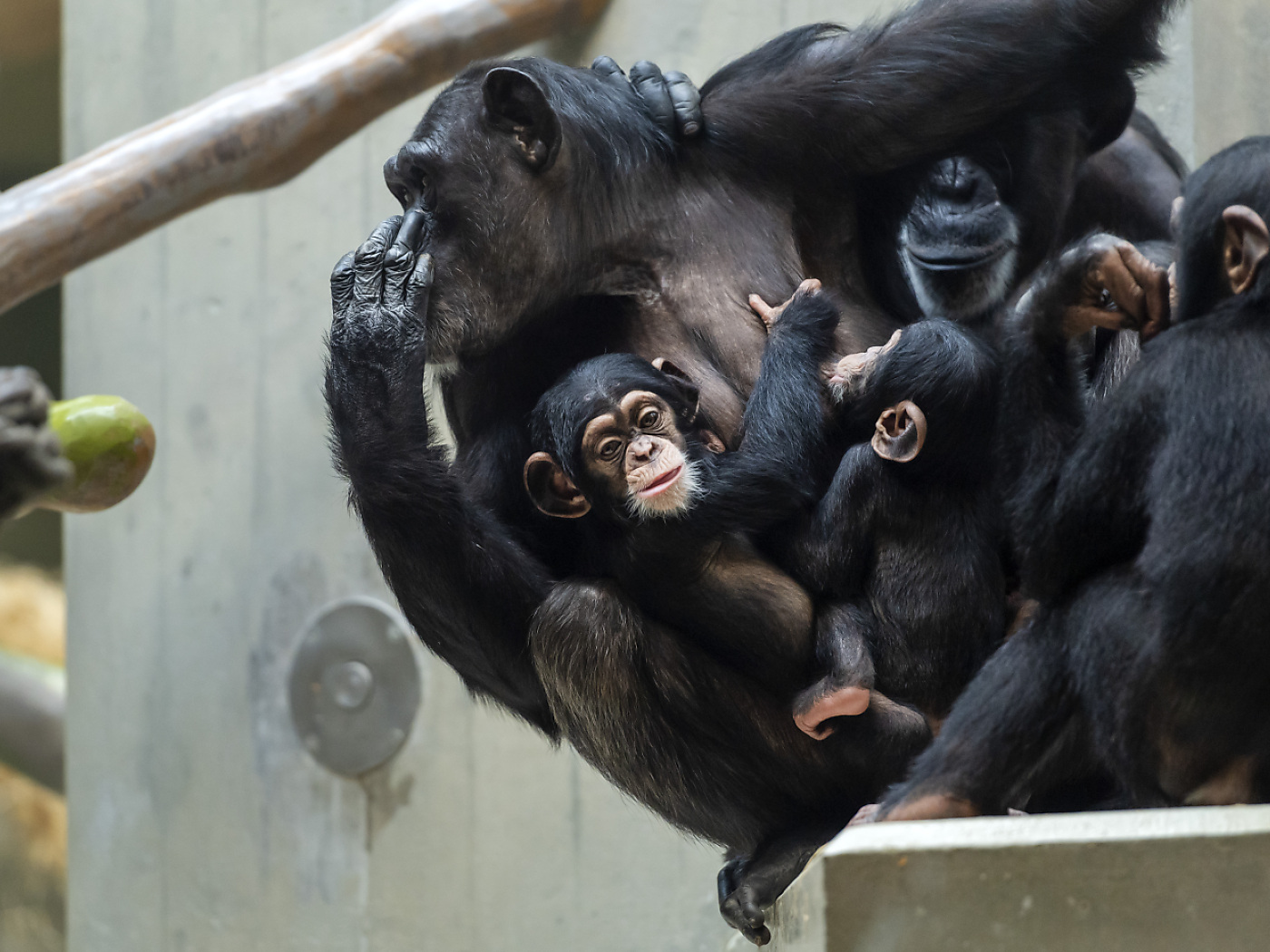Chimpanzee behaviours passed down through generations

Some of the complex behaviours of chimpanzees have been passed down and refined over generations. These include the combination of several tools for foraging, a multidisciplinary study by the University of Zurich (UZH) shows.
+Get the most important news from Switzerland in your inbox
The researchers from the universities and research institutions of Zurich, St. Andrews, Barcelona, Cambridge, Constance and Vienna traced the genetic links between different chimpanzee groups over thousands of years at 35 locations in Africa. New findings in genetics were used to uncover key elements of chimpanzee cultural history, the UZH announced on Thursday.
The researchers also collected a range of foraging behaviours. They divided these into those that require no tools, those that require simple tools, and the most complex behaviours that rely on a combination of tools. An example of a simple tool is a sponge made from a leaf to collect water from a tree crevice, UZH wrote.
+ Waa huu! Chimps combine calls to communicate new meaning
Chimpanzees in the Congo use a thick stick to dig a deep tunnel through hard ground to reach an underground termite nest. They then make a tool to fish out the termites by pulling a long plant stalk through their teeth to fray out a brush-like end. They compressed the end into a point, which they skilfully inserted into the tunnel to finally pull it out and nibble on the termites that had bitten into it.
Exchange through female migration
The researchers discovered that the most complex chimpanzee technologies are most closely linked to populations that are now far away.
“This is exactly in line with the prediction that such advanced technologies are rarely invented or improved and are therefore likely to be passed on between different groups,” Andrea Migliano, professor of evolutionary anthropology at UZH, said in the press release.
In chimpanzees, sexually mature females migrate to new communities to avoid inbreeding. In this way, genes spread between neighbouring groups and, over centuries and millennia, to more distant regions. The authors realised that these same female migrations may have also spread cultural inventions.
“These groundbreaking discoveries provide a new opportunity to show that chimpanzees have a cumulative culture, albeit at an early stage of development,” Migliano said.
Translated from German by DeepL/ts
This news story has been written and carefully fact-checked by an external editorial team. At SWI swissinfo.ch we select the most relevant news for an international audience and use automatic translation tools such as DeepL to translate it into English. Providing you with automatically translated news gives us the time to write more in-depth articles.
If you want to know more about how we work, have a look here, if you want to learn more about how we use technology, click here, and if you have feedback on this news story please write to english@swissinfo.ch.

In compliance with the JTI standards
More: SWI swissinfo.ch certified by the Journalism Trust Initiative


















You can find an overview of ongoing debates with our journalists here . Please join us!
If you want to start a conversation about a topic raised in this article or want to report factual errors, email us at english@swissinfo.ch.